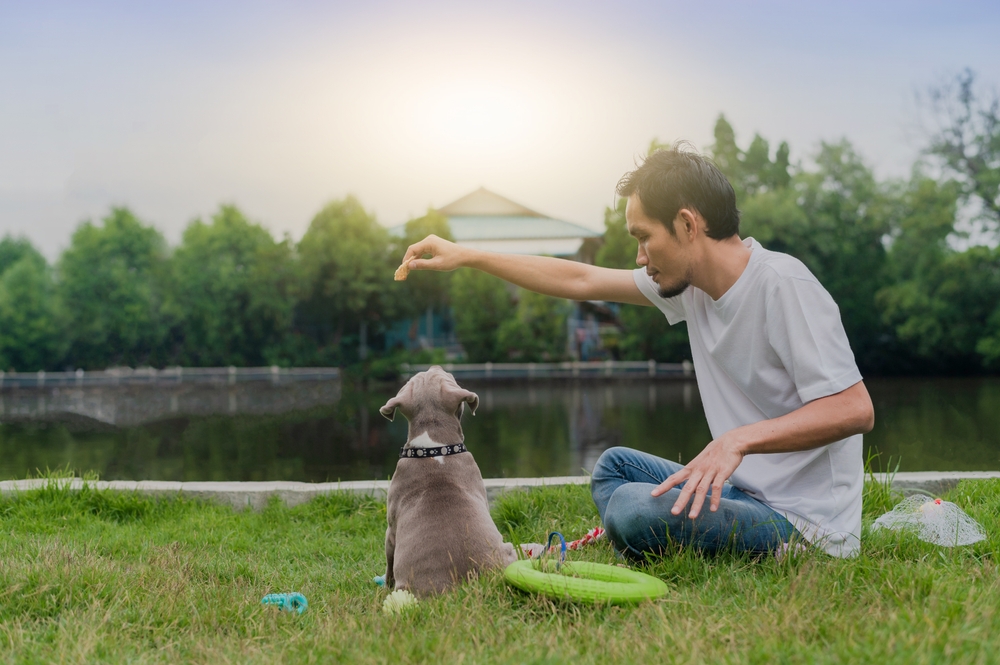American Bullies are known for their loyalty, strength, and affectionate nature. While these traits make them wonderful companions, they also necessitate proper training to ensure they are well-behaved and manageable. At Big Bag Bullies, we understand the importance of training in raising a balanced American Bully. Here are some expert training tips to help you raise a well-behaved American Bully.
Start Early with Puppy Training
Early Socialization: Begin socializing your American Bully puppy as soon as you bring them home. Expose them to different environments, people, and other animals. Early socialization helps your puppy become well-adjusted and less fearful of new experiences.
Basic Commands: Start with basic commands like “sit,” “stay,” “come,” and “down.” Use positive reinforcement techniques such as treats, praise, and toys to encourage desired behaviors. Consistency is key; ensure everyone in your household uses the same commands and reward system.
Use Positive Reinforcement
Reward-Based Training: American Bullies respond exceptionally well to positive reinforcement. Reward your Bully with treats, praise, or playtime whenever they follow a command or exhibit good behavior. This approach builds a strong bond between you and your dog and makes training enjoyable for both.
Avoid Punishment: Avoid using punishment or negative reinforcement, as it can lead to fear and anxiety. Instead, focus on redirecting unwanted behaviors and rewarding positive actions. If your Bully exhibits undesirable behavior, distract them with a toy or command them to perform a different action.
Establish a Routine
Consistent Schedule: Establish a consistent daily routine for feeding, exercise, and training sessions. Dogs thrive on routine and knowing what to expect helps reduce anxiety and behavioral issues.
Regular Training Sessions: Short, frequent training sessions are more effective than long, sporadic ones. Aim for 10-15 minute sessions multiple times a day to keep your Bully engaged and focused.
Address Behavioral Issues Early
Nipping and Biting: Puppies often nip and bite as they explore their world. Redirect this behavior by offering appropriate chew toys. If your puppy bites during play, stop the play session immediately to teach them that biting leads to the end of fun.
Jumping Up: American Bullies are enthusiastic dogs and may jump up to greet people. Discourage this behavior by ignoring them until all four paws are on the ground, then offer praise and attention.
Leash Training
Start Indoors: Begin leash training indoors where there are fewer distractions. Let your Bully get used to wearing a collar and leash. Practice walking around the house, rewarding them for staying by your side.
Gradual Progression: Gradually move to outdoor leash training in a quiet area. Use treats and praise to encourage your Bully to walk beside you. If they pull on the leash, stop walking and wait for them to return to your side before continuing.
Crate Training
Positive Association: Introduce your American Bully to their crate gradually, making it a positive and comfortable space. Use treats, toys, and bedding to create a cozy environment.
Gradual Increase: Start with short periods in the crate and gradually increase the duration. Ensure your Bully associates the crate with safety and relaxation, not punishment.
Mental Stimulation
Puzzle Toys: Provide puzzle toys and interactive games to keep your Bully mentally stimulated. These activities challenge their mind and prevent boredom-related behaviors.
Training Games: Incorporate training into playtime with games like hide-and-seek or obstacle courses. These activities reinforce commands and provide mental and physical exercise.
Patience and Persistence
Be Patient: Training an American Bully requires patience and persistence. Celebrate small victories and understand that progress may take time.
Stay Consistent: Consistency is crucial in training. Stick to your routine, commands, and reward system to help your Bully understand expectations.
Conclusion
Raising a well-behaved American Bully is a rewarding journey that requires dedication, patience, and consistency. By following these training tips from Big Bag Bullies, you can ensure your Bully grows into a balanced and well-mannered companion. Remember, positive reinforcement, early socialization, and regular training sessions are key to success. With love and commitment, your American Bully will become a cherished member of your family, embodying the best qualities of this remarkable breed.



